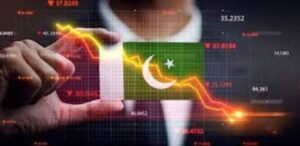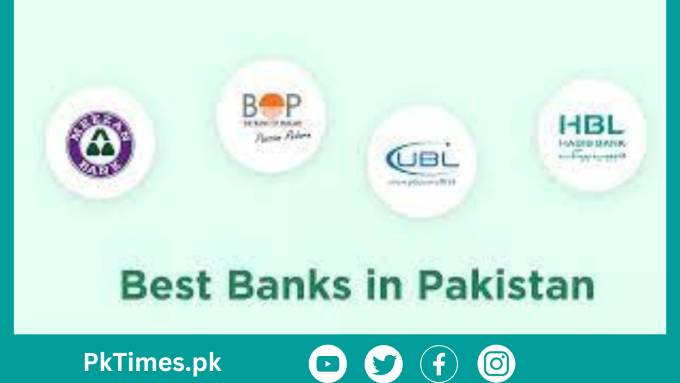the Fragile State of Pakistan’s Economy: In recent years, Pakistan’s economy has faced significant challenges, sparking concerns both domestically and internationally. This article aims to delve into the intricate web of factors contributing to the precarious state of Pakistan’s economy, shedding light on its various dimensions and implications. Amidst the backdrop of Pakistan news, where economic updates often make headlines, it’s crucial to understand the underlying factors shaping the country’s financial landscape.
Understanding the Economic Landscape
Historical Context: Tracing Pakistan’s Economic Journey
Pakistan’s economic journey since its independence in 1947 has been marked by highs and lows. Initially, the country experienced rapid economic growth, buoyed by its agricultural sector and industrialization efforts. However, political instability, mismanagement, and external shocks have hindered sustained progress.
Current Scenario: Key Indicators and Trends
As of recent years, Pakistan’s economy is grappling with numerous challenges, reflected in key indicators such as GDP growth, inflation rates, and fiscal deficits. Despite sporadic growth spurts, the overall trajectory is marred by volatility and fragility.
Factors Contributing to the Economic Crisis
Structural Weaknesses
Dependence on Agriculture
Pakistan’s economy remains heavily reliant on agriculture, with a significant portion of its population engaged in this sector. However, factors such as water scarcity, outdated farming practices, and lack of modernization have hindered its growth potential.
Industrial Stagnation
The industrial sector in Pakistan has struggled to keep pace with global trends, facing challenges such as energy shortages, cumbersome regulations, and inadequate infrastructure. This stagnation has impeded the diversification of the economy and job creation.
Macroeconomic Challenges
Fiscal Deficit
Pakistan consistently grapples with a widening fiscal deficit, exacerbated by high government spending, low tax revenues, and inefficiencies in public expenditure. This imbalance strains the country’s fiscal sustainability and hampers its ability to invest in critical sectors.
Inflationary Pressures
Persistent inflationary pressures erode the purchasing power of consumers and undermine economic stability. Factors such as rising energy costs, currency depreciation, and supply chain disruptions contribute to inflationary spikes, posing challenges for policymakers.
Debt Burden
Pakistan’s mounting debt burden, both domestic and external, poses a significant risk to its economic stability. Servicing debt obligations consumes a sizable portion of government revenues, limiting resources for development projects and social welfare programs.
Geopolitical Instability
| Geopolitical Instability | Description |
|---|---|
| Security Concerns | Persistent security challenges, including terrorism and regional conflicts, deter investment, disrupt trade routes, and drain resources that could otherwise be allocated to economic development. The perception of instability further undermines investor confidence. |
| Regional Dynamics | Pakistan’s geopolitical positioning, particularly its relations with neighboring countries like India and Afghanistan, adds another layer of complexity to its economic challenges. Regional tensions and conflicts can spill over into economic spheres, affecting trade, investment, and stability. |
Impact on Society and Governance
Unemployment and Poverty
High levels of unemployment and poverty exacerbate social inequalities and pose formidable challenges to inclusive growth and development. Youth unemployment, in particular, is a pressing concern, fueling discontent and social unrest.
Social Services and Infrastructure
Inadequate provision of social services such as healthcare, education, and sanitation further strain the socio-economic fabric. Insufficient infrastructure, including transportation networks and energy systems, impedes economic productivity and quality of life.
Political Implications
Economic instability often has political ramifications, shaping public perceptions, influencing electoral outcomes, and testing the resilience of governance institutions. Political instability, in turn, can exacerbate economic woes, creating a vicious cycle of instability and uncertainty.
Efforts towards Economic Revival
| Efforts towards Economic Revival | Description |
|---|---|
| Economic Reform Agenda | The Pakistani government has embarked on ambitious economic reform agendas aimed at addressing structural weaknesses, improving governance, and attracting investment. Reforms in areas such as taxation, energy, and governance aim to enhance the business climate and stimulate growth. |
| Investment Promotion | Efforts to promote investment, both domestic and foreign, play a crucial role in revitalizing Pakistan’s economy. Incentives such as tax breaks, regulatory reforms, and infrastructure development aim to attract capital and spur economic activity in key sectors. |
| IMF Bailout Programs | Pakistan has sought assistance from international financial institutions, including the IMF, to stabilize its economy and implement structural reforms. IMF bailout programs come with conditions aimed at addressing fiscal imbalances, improving governance, and enhancing economic resilience. |
| Foreign Direct Investment | Foreign direct investment (FDI) remains a vital source of capital and expertise for Pakistan’s economy. Efforts to attract FDI involve creating a conducive business environment, addressing security concerns, and offering incentives to foreign investors. |
International Assistance and Collaboration
IMF Bailout Programs
Pakistan has sought assistance from international financial institutions, including the IMF, to stabilize its economy and implement structural reforms. IMF bailout programs come with conditions aimed at addressing fiscal imbalances, improving governance, and enhancing economic resilience.
Foreign Direct Investment
Foreign direct investment (FDI) remains a vital source of capital and expertise for Pakistan’s economy. Efforts to attract FDI involve creating a conducive business environment, addressing security concerns, and offering incentives to foreign investors.
Challenges and Opportunities Ahead
Structural Reforms
Comprehensive structural reforms are essential to address the root causes of Pakistan’s economic challenges. Reforms in areas such as taxation, governance, and education are critical for promoting inclusive growth, enhancing productivity, and fostering competitiveness.
Human Capital Development
Investments in human capital, including education, skills training, and healthcare, are crucial for building a workforce equipped for the demands of the modern economy. Empowering youth, women, and marginalized communities can unlock Pakistan’s demographic dividend and drive economic progress.
Diversification of Economy
Reducing dependence on traditional sectors such as agriculture and textiles requires diversifying the economy into high-value-added industries such as technology, manufacturing, and services. Innovation, entrepreneurship, and access to finance are key drivers of economic diversification.
Harnessing Technological Advancements
Embracing technological advancements, including digitalization, automation, and renewable energy, can catalyze economic growth and enhance competitiveness. Investing in infrastructure and fostering an enabling environment for innovation are crucial for harnessing the benefits of technology.

Conclusion
The state of Pakistan’s economy is indeed dire, marred by a multitude of challenges ranging from structural weaknesses to macroeconomic imbalances and geopolitical tensions. However, amidst these trials lie opportunities for revival and growth. With concerted efforts from both the government and the private sector, coupled with international support and strategic reforms, Pakistan can navigate through these turbulent waters towards a more stable and prosperous future.
Read More: which field is best in Pakistan
Unique FAQs
- Is Pakistan’s economy solely dependent on agriculture?
- While agriculture plays a significant role in Pakistan’s economy, contributing to its GDP and employing a large portion of the workforce, the country also has other sectors such as industry and services contributing to its economic output.
- How does geopolitical instability affect Pakistan’s economy?
- Geopolitical instability can impact Pakistan’s economy in various ways, including investor confidence, trade disruptions, and security expenditures, all of which can strain economic growth and development.
- What are some government initiatives aimed at addressing the economic crisis?
- The government of Pakistan has introduced several initiatives such as economic reform agendas, investment promotion policies, and efforts to attract foreign direct investment to stimulate economic growth and stability.
- What role does international assistance play in Pakistan’s economic recovery?
- International assistance, particularly from organizations like the IMF and through foreign aid and investment, can provide much-needed financial


